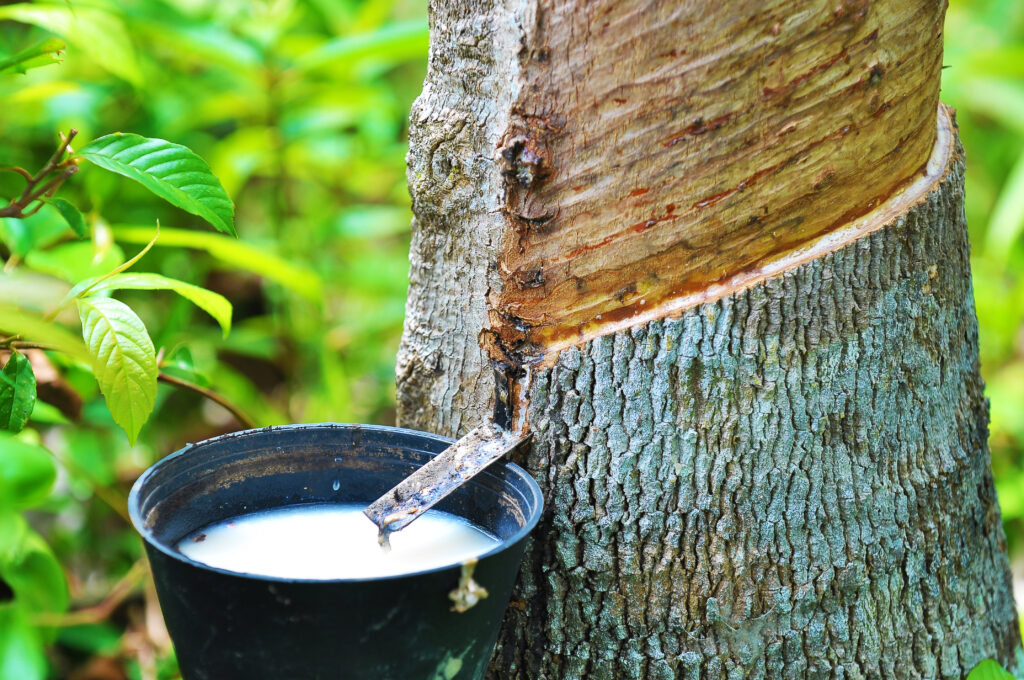Vulcan do it: In the 1830s, the first clothing made from rubber went bust - melting in heat and cracking in cold. Charles Goodyear spent years experimenting, looking for a formula that wouldn’t break. In 1839 he mixed liquid latex with sulfur, heated it in the sun, and cooked it on a stove, creating vulcanized rubber. The process found many uses, including tires for cars.--invent.org
You read it first in The Factory in Guide magazine.
Have you ever wondered how some of your toys are made? Some are probably made from rubber. They can be hard or soft. Some, like balls, are soft enough to bounce. Have you ever wondered where rubber comes from? I have. And it’s quite interesting!
Natural rubber comes from the Para rubber tree. This tree grows freely in the tropics of South America and Brazil. There, farmers tap the trees to get the white sap called latex. They do this by cutting carefully into the tree just enough so the sap will flow out, but not harm the tree. They attach a small bucket to catch the sap. The trees have to be about 5-6 years old before they can harvest the latex, but by 26-30 years old they no longer produce it. So they cut down the trees for building products and plant more.
Europeans brought rubber trees to other tropical regions, including Southeast Asia, South Asia, and West Africa. Asia now produces most of the world’s natural rubber.

But toys were not the only items made from rubber. In 1770 an English chemist discovered that the material rubbed out pencil marks, and so we get the name rubber. And that’s how erasers were born!
In 1832 Scottish chemist Charles Macintosh began making raincoats by putting a layer of rubber between two layers of cloth. This kind of coat is still called a macintosh. Manufacturers started making rubber products, including shoes, elastic bands, hoses and tubes. However, these early products got sticky in hot weather and stiff in cold.
One day in 1839, something amazing happened. Charles Goodyear, an American inventor, was working with rubber and sulfur (a yellow chemical). He accidentally dropped some of the mixture on a hot stove. Instead of melting, the rubber turned into a strong, springy material.
Goodyear realized that the heat and sulfur had changed the rubber. He called this process "vulcanization," after Vulcan, the Roman god of fire. This was a big breakthrough! Now the rubber would not melt in hot weather or turn brittle too fast in the cold.
If you have ever heard of Goodyear tires, they are named after Charles Goodyear. One of the most important uses of vulcanized rubber is in tires. This made a big impact on the development of the automobile and transportation industries. Like Thomas Edison, who took a while to develop the electric light bulb, Charles Goodyear kept working and didn’t give up until he made rubber better.
"He causes the grass to grow for the cattle, And vegetation for the service of man, That he may bring forth food from the earth," Psalm 104:14
—Carol Lyons, Assistant
Discovery Mountain
Scripture taken from the New King James Version, Copyright 1982 by Thomas Nelson. Used by permission. All rights reserved.
Learn More About This Fact
For more interesting facts, click on the buttons below!